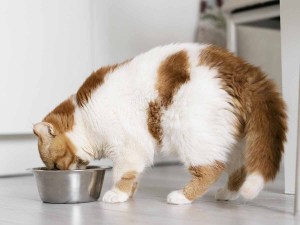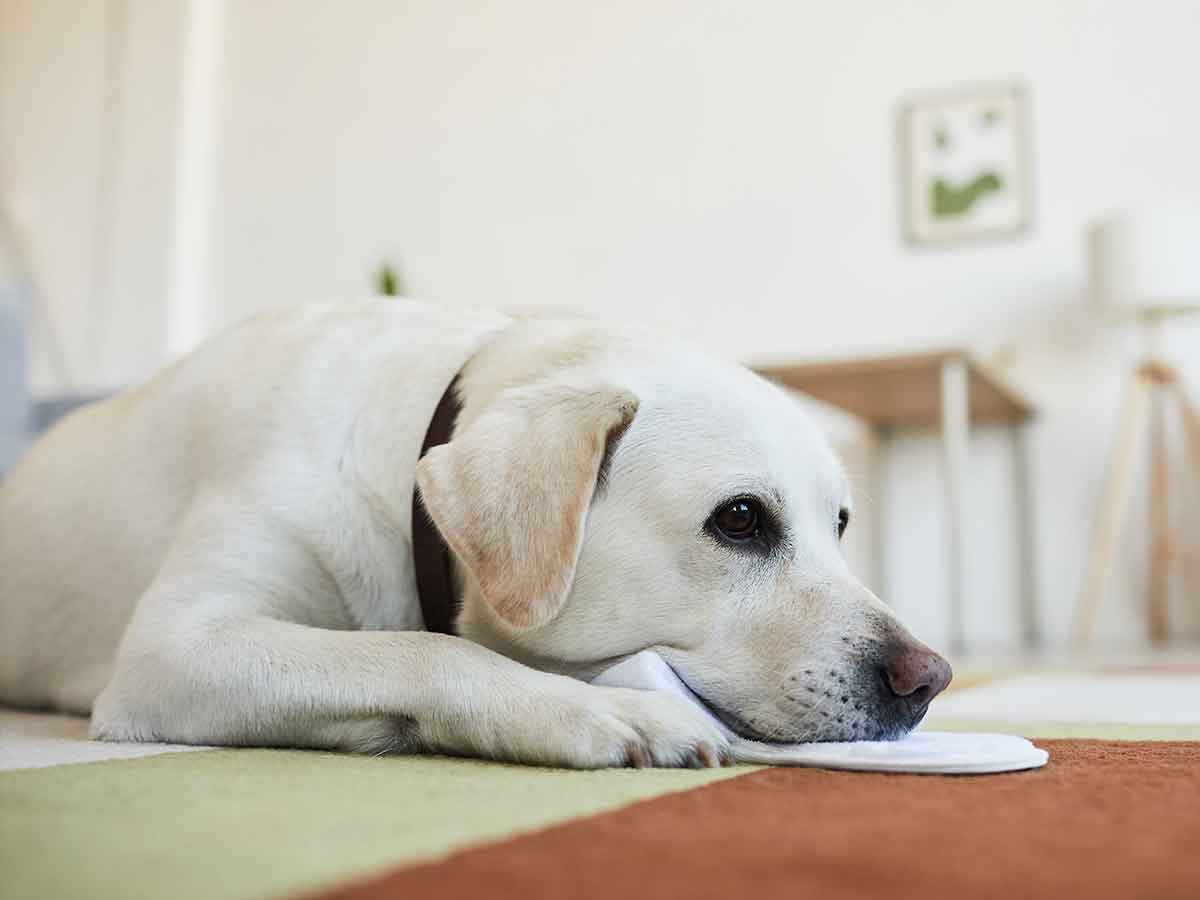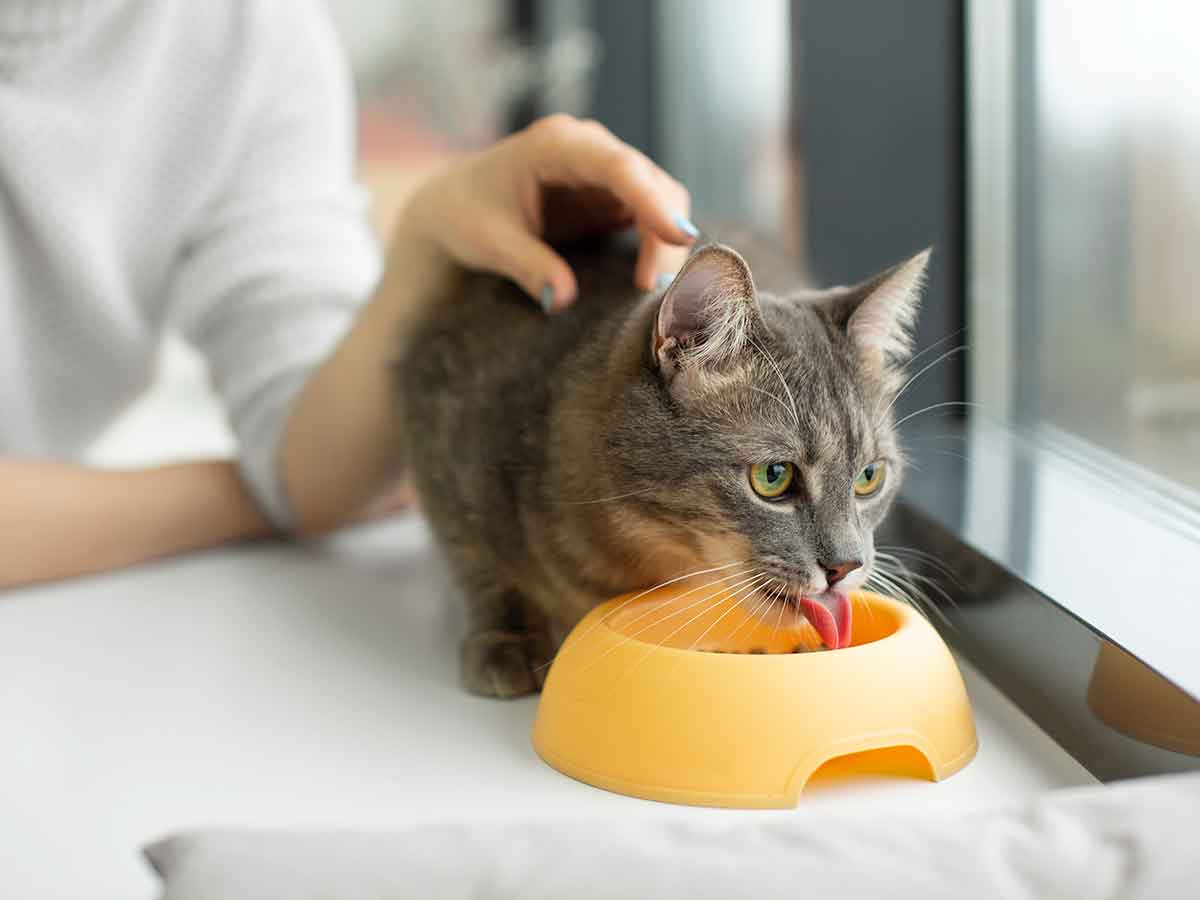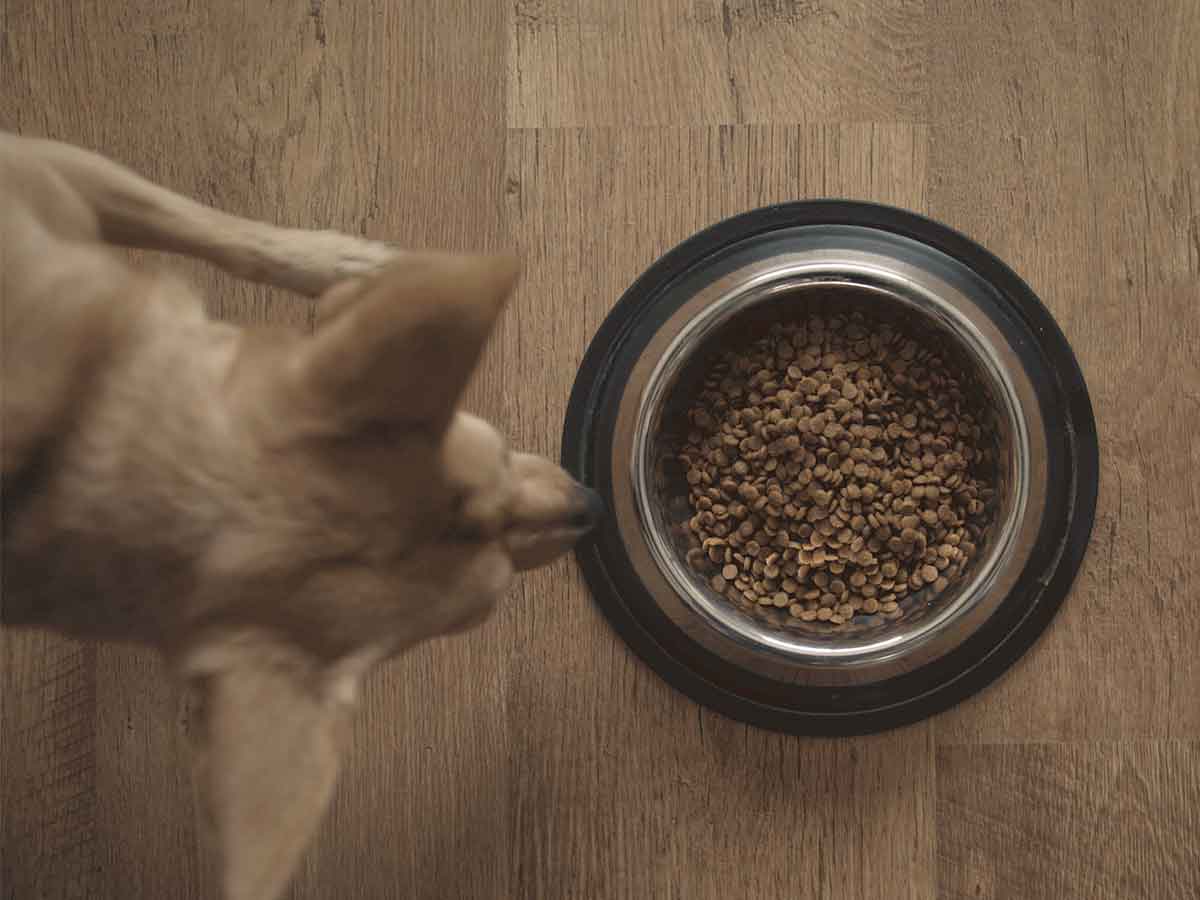What do kittens eat?
For the first three to four weeks of their life, kittens drink their mother’s milk, which is filled with just the right mix of fat, protein, and nutrients for little felines. After three weeks, you can start offering your kitten some solid food. Look for a premium kitten food. See if a high-protein source, such as chicken, is listed among the first four ingredients. If you have trouble deciding, ask your veterinarian what she recommends. Always make sure your kitten has fresh water to drink.
Human food is for humans
Despite all the cute pictures of kittens drinking milk out of a saucer, kittens should only drink their mother’s milk. “Some kittens (and adult cats) are lactose-intolerant and get sick when fed cow’s milk and other dairy products,” says Drew Weigner, DVM, board-certified feline specialist.
It’s also important to build good habits early and keep your kitten only eating what she should.
“Though most other ‘people’ food won’t hurt them, kittens will soon learn to prefer [it] to their regular food. You’ll never eat in peace again!” he adds. Human food can also irritate your kitten’s tiny tummy and cause diarrhea.
Feeding an orphan kitten
If you’ve rescued a tiny kitten that doesn’t have a mother, you should immediately consult your veterinarian. A newly born kitten needs special kitten formula, and you will need instructions on how to bottle-feed him. In addition, since very young kittens can’t urinate or defecate without their mother’s help, you’ll have to help him instead, using a moistened cotton ball as a substitute for his mother’s tongue (don’t worry—it’s not as difficult as it sounds!).
Little amounts, a lot of the time
Kittens’ little bellies can’t hold much food, but they still need to eat a lot. So, the key is small and frequent amounts of food. Dr. Weigner recommends that dry kitten food be available at all times, with a helping of canned food twice daily, as much as kittens can eat in 15 minutes.
“Because kittens only have ‘baby’ teeth, it’s difficult for them to get enough nutrition if they only eat dry food. They grow better when they get some canned kitten food,” he says. You can also wet dry kitten food with water to make it easier for kittens to eat.
Entering adulthood
You can start switching your kitten to adult cat food at six to eight months of age to up to one year, but don’t do it too suddenly. Gradually mix in an increasing amount of adult food each day with the kitten food. Around this time, you may also want to start your cat on a feeding schedule to prevent obesity—many owners find that twice a day is most convenient. Feeding a twice-daily measured amount also helps prevent obesity and increases the likelihood that you’ll notice if your cat’s appetite changes. Be sure to give your kitten extra playtime and affection during the change to help her adjust.
Ten tips for feeding your kitten
● Look for food specially formulated for kittens, with a protein source such as chicken listed in the first four ingredients.
● Report any changes in eating behavior to your veterinarian, as they could signal a medical problem. If your kitten loses weight rather than gains it, call your veterinarian immediately.
● Make sure to have fresh, clean water always available for your kitten.
● Supplement dry food with canned food to make sure your kitten is getting enough nutrition and moisture.
● Never feed your kitten cow’s milk or other human foods.
● Never place your kitten’s food too close to his litter box.
● Start the switch to adult cat food after spaying or neutering your cat, which should be at about six to eight months of age.
● When you start your kitten on a feeding schedule, don’t feed him too close to when you wake up—otherwise, you’ll find him sneakily moving your wake-up time earlier and earlier.
● Make sure your garbage can has a tight lid or is inside a cabinet to prevent your kitten from getting inside it for midnight snacks.
● Include plenty of playtime and affection, which are just as essential to a kitten’s health and well-being as the right food.
Want to share this article?
More like this
Nutrition in diabetic pets
Is your pet diabetic? Make sure you’re maintaining a nutritious diet to keep him happy and healthy.
What to feed fluffy? Dry or wet? Both?
Every cat is different when it comes to wet or dry food. Find out which one is best for you.
Does your dog need to go on a diet?
A chubby pup might be cute, but it’s best for your dog to maintain a healthy weight. Here’s how to tell if he’s put on a few too many pounds.





 Go To United States
Go To United States Austria
Austria Belgium
Belgium Czech Republic
Czech Republic Denmark
Denmark Europe
Europe Finland
Finland France
France Germany
Germany Greece
Greece Hungary
Hungary Ireland
Ireland Israel
Israel Italy
Italy Netherlands
Netherlands Norway
Norway Poland
Poland Portugal
Portugal Romania
Romania Spain
Spain Sweden
Sweden Turkey
Turkey United Kingdom
United Kingdom